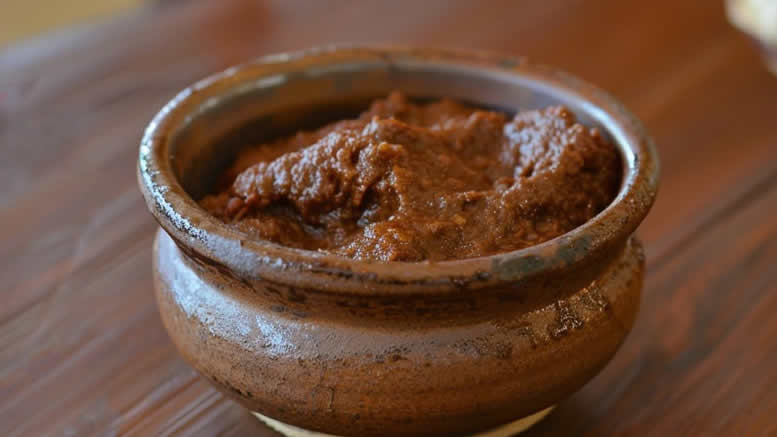Tamarind, often referred to as the Indian date, is the fruit of an evergreen tree from the pea family (Fabaceae), native to tropical Africa but long cultivated across South and Southeast Asia. Known for its sweet-sour flavour, tamarind pulp plays a vital role in many Asian dishes, from street food to traditional home cooking.
Tamarind has a complex flavour – tangy, slightly sweet, with hints of citrus and a deep richness that enhances both savoury and sweet dishes. Its pulp is sticky and brown, encasing hard, flat seeds inside long, pod-like shells. While the pulp is most commonly used in cooking, the seeds are sometimes roasted and ground for use in flavouring and traditional medicine.
Common Culinary Uses of Tamarind
Tamarind is used widely in:
- Pastes and sauces – for marinades, curries, and dipping sauces.
- Soups and broths – to add tang and depth.
- Snacks and street foods – such as chutneys and tamarind candies.
- Refreshing drinks – particularly in tropical countries, where tamarind juice is a popular cooler.
One of the most internationally recognised uses of tamarind is in Worcestershire sauce, which is based on an Indian recipe brought to England during colonial times.
Cuisines and Dishes That Feature Tamarind
Tamarind is a staple ingredient in many Asian cuisines, particularly in:
India
- Sambar – a spicy South Indian lentil and vegetable stew.
- Imli chutney – a sweet and sour tamarind chutney served with snacks like samosas and pakoras.
- Pani puri – the tamarind-infused water is key to this popular street food.
Thailand
- Pad Thai – the tangy-sweet flavour of tamarind balances the savoury and spicy notes.
- Som tam (green papaya salad) – often contains tamarind to bring out a sour kick.
- Tamarind-based dipping sauces for grilled meats and seafood.
Vietnam
- Canh chua – a sour soup made with fish, pineapple, and tamarind.
- Me rim (caramelised tamarind sauce) – used for prawns and other seafood dishes.
Indonesia & Malaysia
- Asam pedas – a sour and spicy fish curry that uses tamarind as its base.
- Rendang variations – some versions include tamarind for acidity and complexity.
Philippines
- Sinigang – a beloved sour soup traditionally made with tamarind as the main souring agent.
Using Tamarind at Home
Tamarind is available in several forms, each suited to different cooking needs. The most traditional option is the tamarind block, which consists of compressed pulp and seeds. It requires soaking in warm water and straining before use, but many cooks prefer it for its richer flavour. Tamarind paste or concentrate, on the other hand, is a convenient alternative that saves time in the kitchen—just spoon out what you need, no prep required. You might also come across whole dried tamarind pods, though these are less common in supermarkets and more often found in Asian grocers. Once opened, tamarind paste should be stored in the fridge in an airtight container, where it will keep for several months. Tamarind blocks can be wrapped and refrigerated, or even frozen in portions for longer storage. Regardless of the form, a little tamarind goes a long way, and having it on hand is an easy way to add a distinctive tang to your everyday cooking.
Tamarind is a natural flavour enhancer. Its tartness balances out rich, fatty dishes and deepens the flavour of sauces, soups, and even desserts. It’s a must-have ingredient in any Asian kitchen and a great way to bring authenticity and complexity to your home-cooked dishes.

